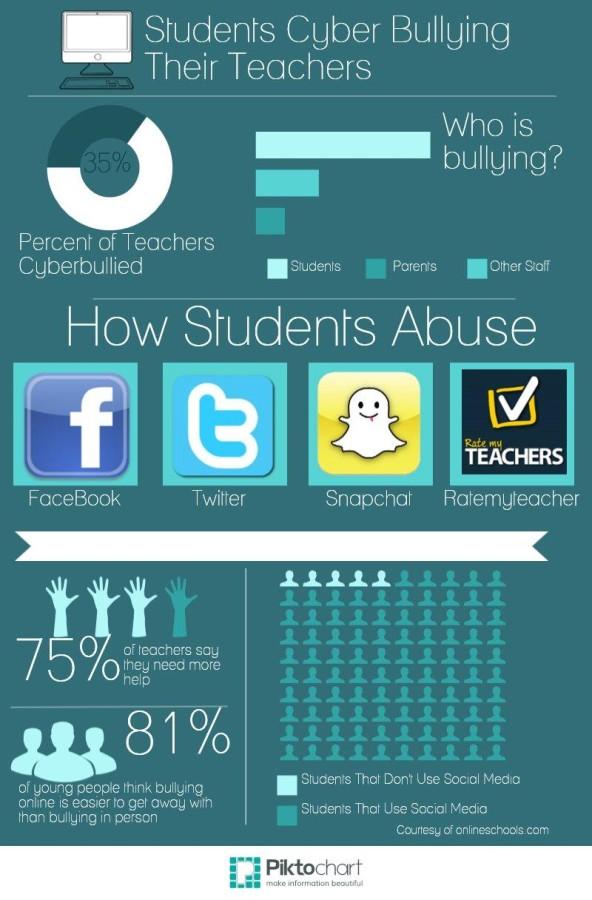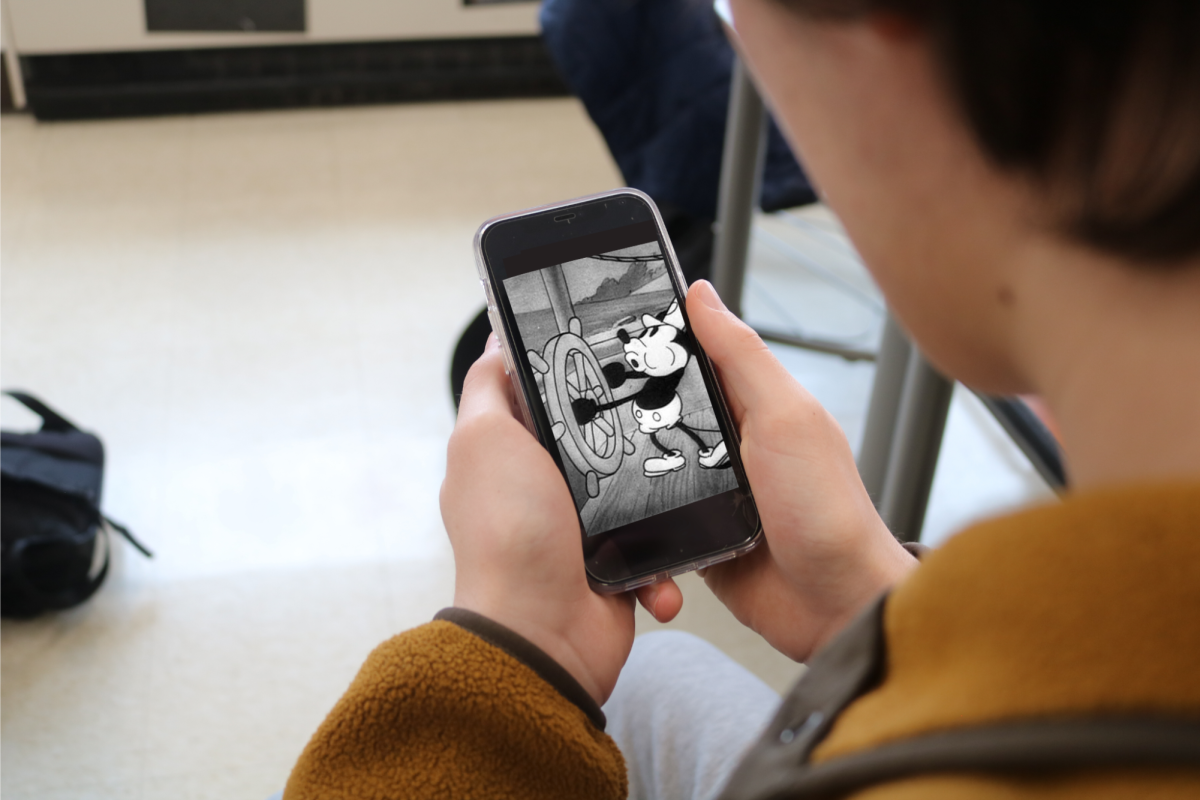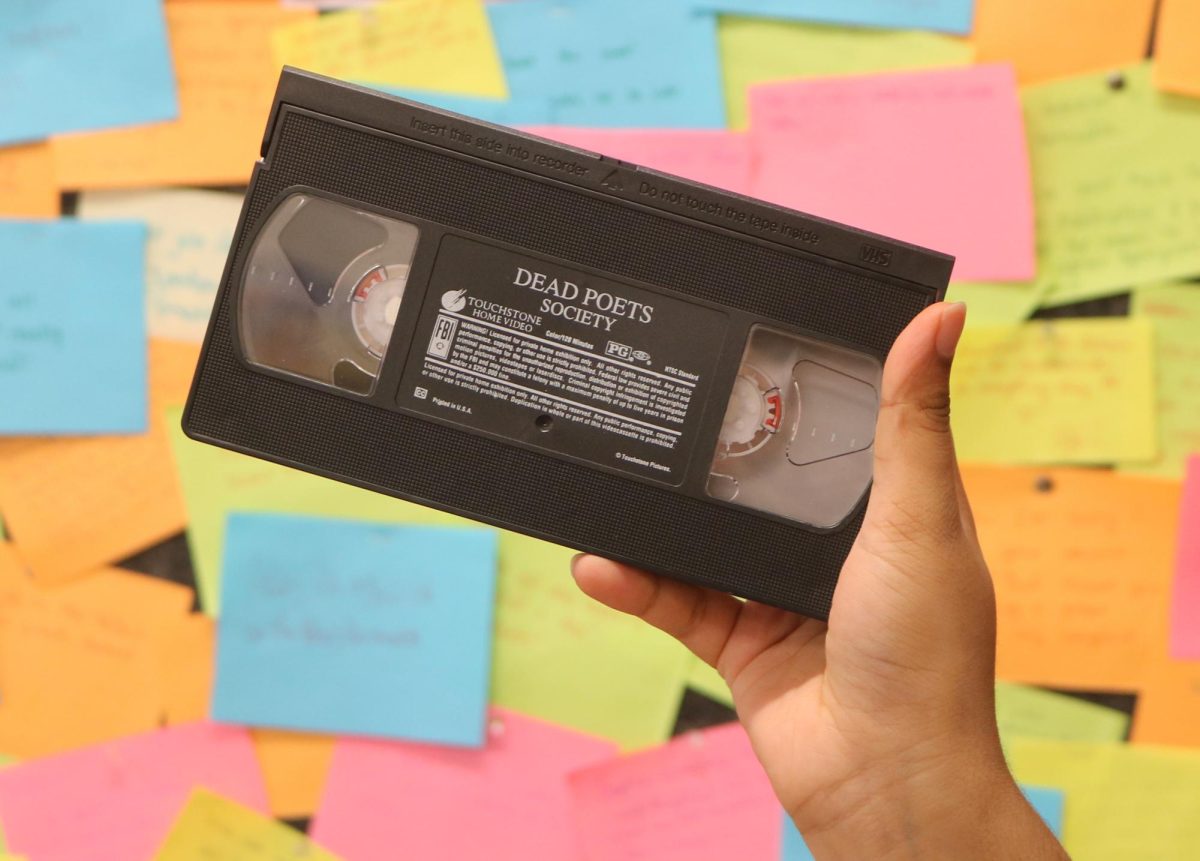Cyberbullying is an ongoing problem for many students. But what happens when teachers are the victim?
A recent Plymouth University study showed over 35% of teachers report that they have been cyberbullied by a either a student, parent, or other staff member. But many teachers neglect to report the bullying to authorities or media.
Cyberbullying is the use of text messages, emails and websites to hurt, upset or embarrass another person. With the growing popularity of technology, teens have become able to bully anonymously, making it easier to get away with.
What causes students to bully a teacher can differ, from getting a bad grade to a mean teacher to a joke gone too far.
“I always see kids complaining about homework load. They say, ‘this teacher is so mean,’ or ‘oh my goodness this teacher is so stupid,’” said sophomore Dolores Palmieri.
Teachers rarely report being bullied. It’s hard for anyone being bullied, not just teachers, to reach out to a friend or adult. But do students ever realize the affect it has on the teachers?
“Even an innocent comment can be hurtful,” said Latin teacher Ms. Jamie Reuben.
Students may not understand the true intent behind what and why a teacher is doing something. Students should try to see it from the teacher’s view, and not just theirs.
“Sometimes I have to say or do things they’re not going to like,” said Mr. Bill Mix, a geography teacher at LHS.
There are many websites and social media sites that make it easily accessible to cyberbully teachers. One such site is Ratemyteachers.com, an educational resource for students and parents to rate teachers anonymously. The website was started in April 2001 by Michael Hussey as part of the now-defunct Rate My Network. It now operates in the United States, United Kingdom, Canada, Ireland, Australia and New Zealand. Over 11 million teachers have been rated on this website.
This site gives students a chance to voice their own opinion on their teachers and for others to read about their future ones. This site is a bit controversial. The right to freedom of speech means you have the freedom to say what you want. Students take full advantage of this, sometimes too much advantage. Students comment angry thoughts like, “She is just straight up dumb, she really has no idea what she’s talking about. I don’t know if she even has a college education because she is flat out brain dead,” as one comment states about a teacher at LHS.
There are around 200 teachers and staff members from LHS rated on ratemyteacher.com. They ratings range between 30%-100% on the site. Some of the teachers are from up to 10 years ago and don’t even work at LHS anymore. But there are some current LHS teachers rated on the site.
“I remember it being more a common thing in middle school and I think a lot of people forgot about it,” said freshman Katherine Crandell.
Some believe ratemyteacher.com is a great website to help you find out the truth about your teachers.
“On the one hand I think rate my teacher is a good tool because it give students an idea of maybe what kind of teacher they would be getting, at the same time, it’s very scary because a student shouldn’t be allowed to teacher shop,” said Ms. Reuben.
Students can look up their new teachers and find out what they’re like before they even start the class. But most believe the website only shows love or hate, no in between.
Social media is another easy way for students to cyberbully as a group. Facebook pages set up against teachers were mostly used when Facebook was the most popular social media site. Now other social media sites are used over Facebook.
The main social media site where kids talk about their teachers is Twitter. Kids tweet about how their day was and how they’re feeling. But kids sometimes use this quick and easy public site to vent about their teachers.
“If I wanted to be in honors I would have signed up for that class,” tweeted an LHS student about her world history class previously this year.
Another popular social media app is Snapchat, which is a quick and easy way to send pictures, videos, or messages to a bunch of people at once. You can also make “Snap Stories” where all your friends can view photos. Snapchat is also used to cyber bully teachers. Students snap quick photos of their teachers without them even noticing.
“I’ve seen people post about their teachers on Snapchat many times, like pictures of teachers with goofy hats or a picture of homework expressing how they hate it,” said sophomore Jack Bloom.
If a teacher does something funny or embarrassing, a student might see it as an opportunity to take a Snapchat and send it to friends. Sometimes a Snapchat is a harmless picture, while other times it can be an inappropriate picture of your teacher with a mean caption.
“It’s kind of scary that this is happening and teachers don’t really know about it,” said Ms. Reuben.
With the increasing use of technology, teens need to understand the responsibility that comes with it. Responsibility also comes with consequences, because there is always someone who will see what you post on the internet.
“I don’t think the kids realize that their actions would be considered bullying,” said Crandell.
Anonymous posts might mean there’s no name attached to them, but it doesn’t mean it can’t be eventually discovered. These anonymous posts are often ruder than posts that require an authenticated name attached to the comment.
“People tend to be ‘real tough’ when they don’t have to be held accountable,” said Mr. Mix.





![Mr. Scott Brzezinski poses for a photo while working at ShurWay Moving in Libertyville where his cousin Mr. Eric Brzezinski also works. He appreciates that LHS prepares students for their future by providing a variety of opportunities. “[There are] a lot of different resources that LHS has between colleges and counselors,” he said. (Photo courtesy of Mr. Scott Brzezinski)](https://www.lhsdoi.com/wp-content/uploads/2025/02/Mr.-Scott-Brzezinski-Photo-2-1200x1200.jpg)


